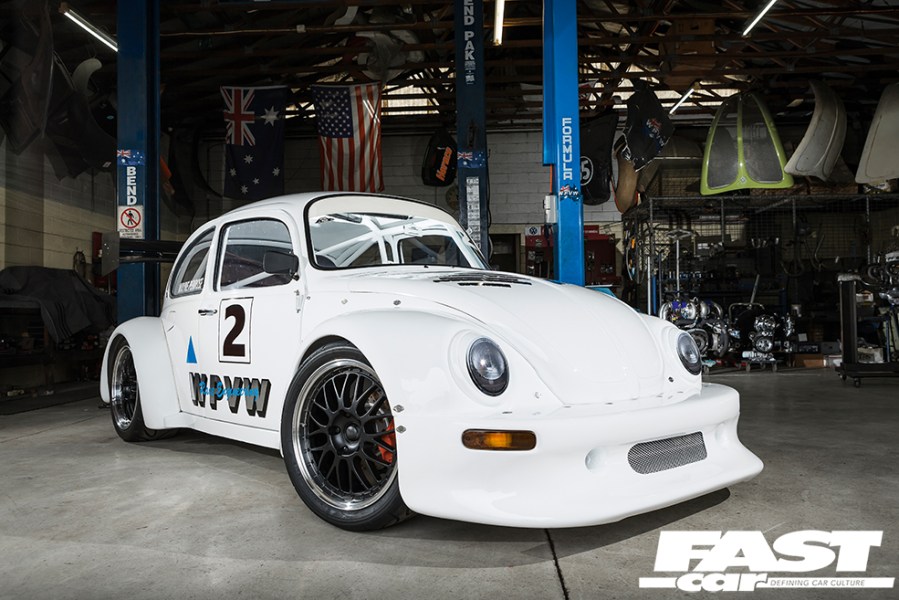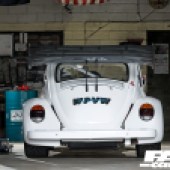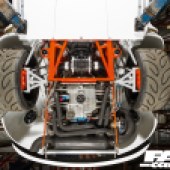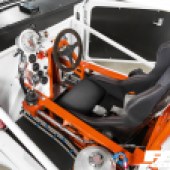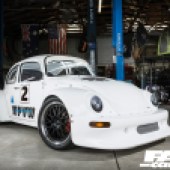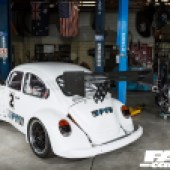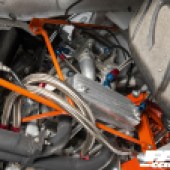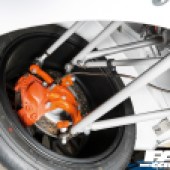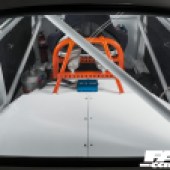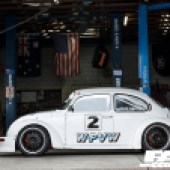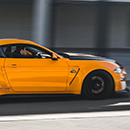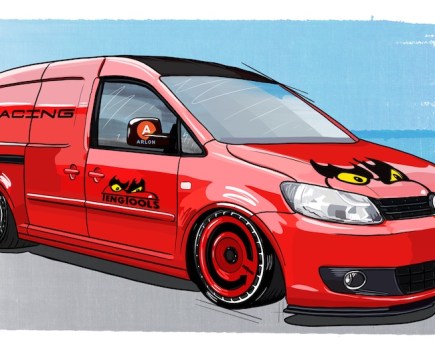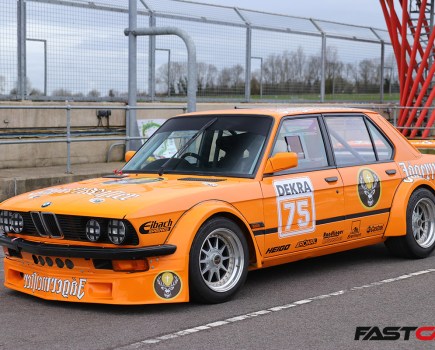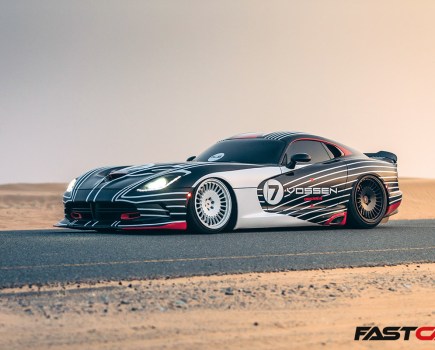After 25 years of ups and downs, Wayne Penrose’s insane, one-off Beetle race car – dubbed ‘Phoenix’ – is finally ready to hit the circuit. Prepare to be amazed…
Haters are gonna hate and whiners are gonna whine. Unless you’re a tad older than your retro motor, It’s something we’re all used to in the crazy, internet comment-led world.
It’s not just the wondrous web where negativity can be found though. Sadly, it’s something that still plagues the modified car world as different scenes are all too willing to clash and criticise.
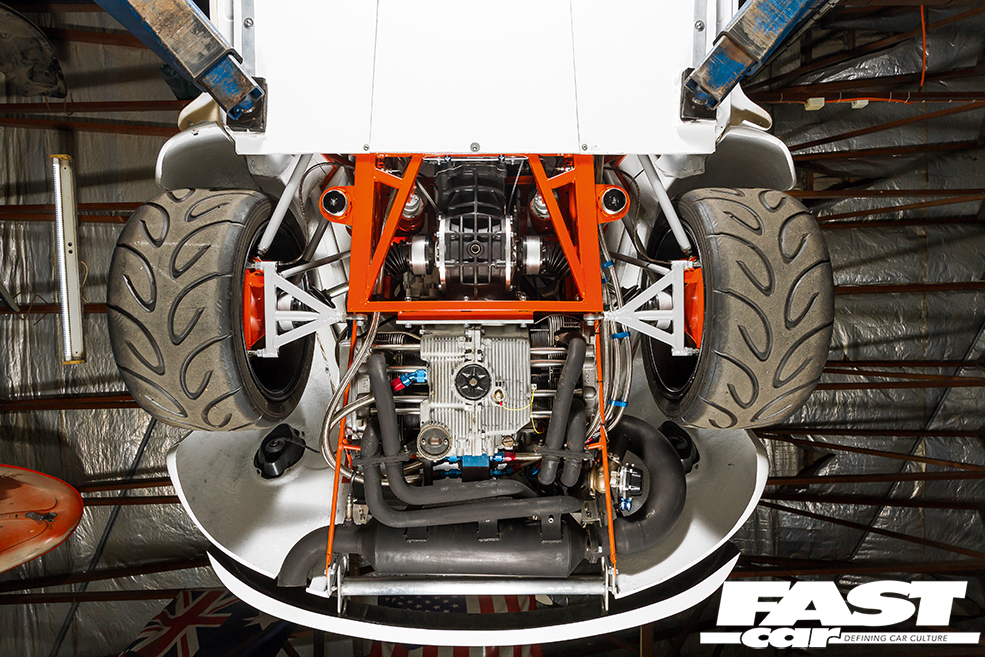
Legendary VW tuner, Richard Holzl of the iconic Sydney-based V-Force garage, has experienced this first hand after commencing an incredibly ambitious Beetle project back in the early ‘90s. The concept was simple enough: build a VW-bodied (and powered) racer to take on the local circuits which were dominated by much larger V8 machines at the time.
It was a project which would see a seriously impressive motorsport machine begin to take shape under an unassuming Beetle shell. Most certainly enough to lure the more formidable-looking cars in… only to be left red-faced at the finish line.

Richard started with a Formula 2 chassis to set the serious tone, originally mated to a ‘Superbug’ racing Beetle steel shell, and boasting some of the most impressive engineering ever applied to any Bug anywhere. Stuff like a bespoke roll cage which not only supported the chassis but also made its way into the cabin itself, acting as a frame for a centrally-mounted seat (just like the McLaren F1). It also had Porsche wheels housing huge Brembos.
So far, so good then. So, why the hate? As a rolling shell, the humble Beetle was debuted at shows across the country, unsurprisingly to much acclaim, with the car looking like it had nothing but an extremely promising future ahead of it. Then 1996 came around – not a great financial year for Australia which saw several smaller businesses struggle. It also saw zero budget left in Richard’s pot to finish his rather ambitious side-project.
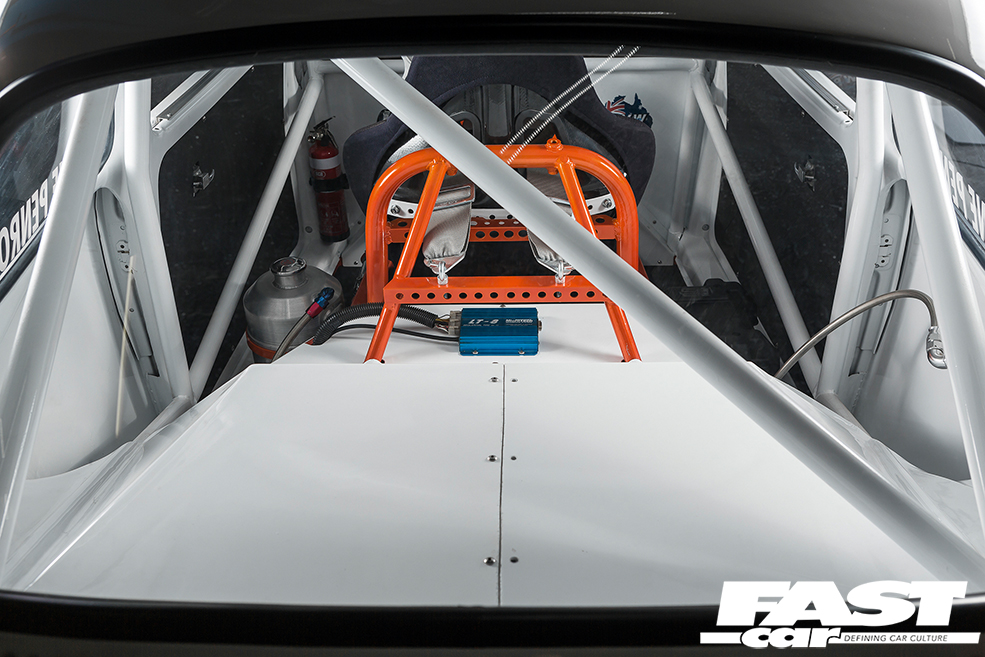
Slowly dissolving into the background and without a motor or transmission ever setting foot into that clinical spaceframe chassis, he began facing fire and ridicule from every corner for seemingly throwing in the towel on such a promising build.
The overlooked Beetle needed someone with a clear vision and the commitment to see it through to completion. The person for the job was Wayne Penrose, a budding racer that had admired Richard’s work from the sidelines since day one. So, it was on one fateful day in 2010 that the torch was finally passed from old owner to new. Wayne promised he’d do the job justice.
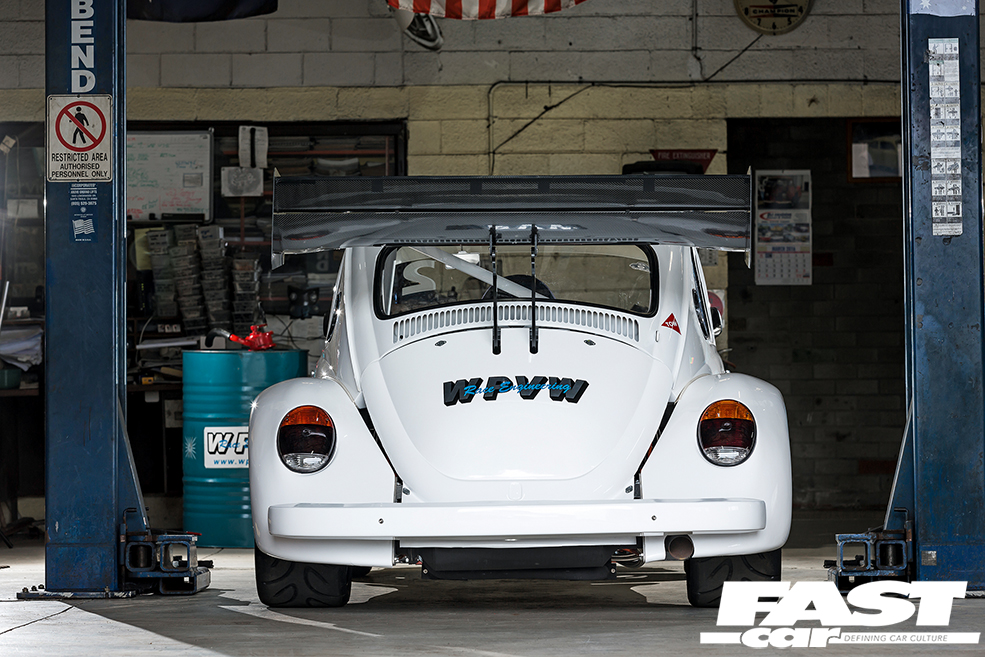
We all know the frustrations of taking over someone else’s handiwork halfway through the job, but using a level-headed, optimistic attitude, Wayne was soon able to get the project moving leaps and bounds. He, rather aptly, dubbed the car ‘Phoenix’ after its fall and subsequent rise, and it’s safe to say the results go above and beyond even Richard’s original dreams.
Let’s look at that engine to start with. Sticking to the VW-based blueprint that was originally planned, it’s clearly one of the most extreme versions of an air-cooled lump anywhere in the world. Loosely based on a 1.8-litre Type II bus layout, it features an all-new, stroked aluminium block with forged internals, such as a Scat crank and Carrillo pistons, all tied into racing heads that house only the lairiest of camshafts. These lumpy sticks are vitally important too, chiefly because they allow for some serious boost to be added into the equation.
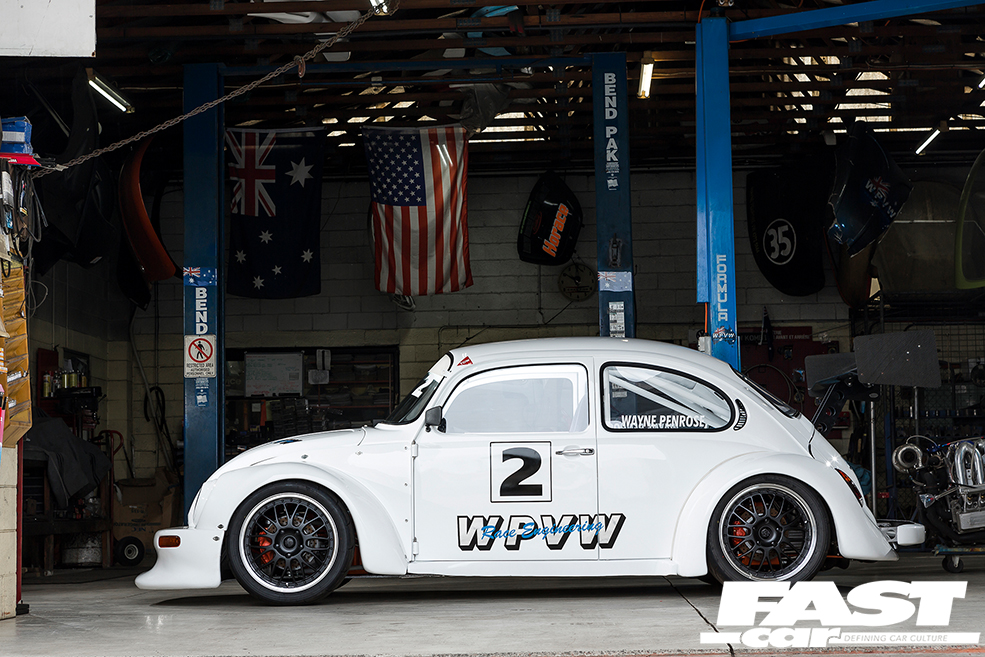
The boost itself comes courtesy of a modern (and very, very large) T04E-based unit. This successfully supplies the Beetle with a simply ridiculous amount of power to the rear wheels, and needed the support of a heavily re-worked air and fuelling system. In all there’s 550bhp pumping out of this thing, pretty much unheard of for such a small-capacity air-cooled lump!
The slice of aluminium engine perfection was then mated to an equally-impressive gearbox: an IRS four-speed unit ripped from a VW Type I, which features a monster clutch, chromoly driveshafts and even switchable gear ratios depending on the characteristics of the circuit it finds itself on at any particular race weekend.
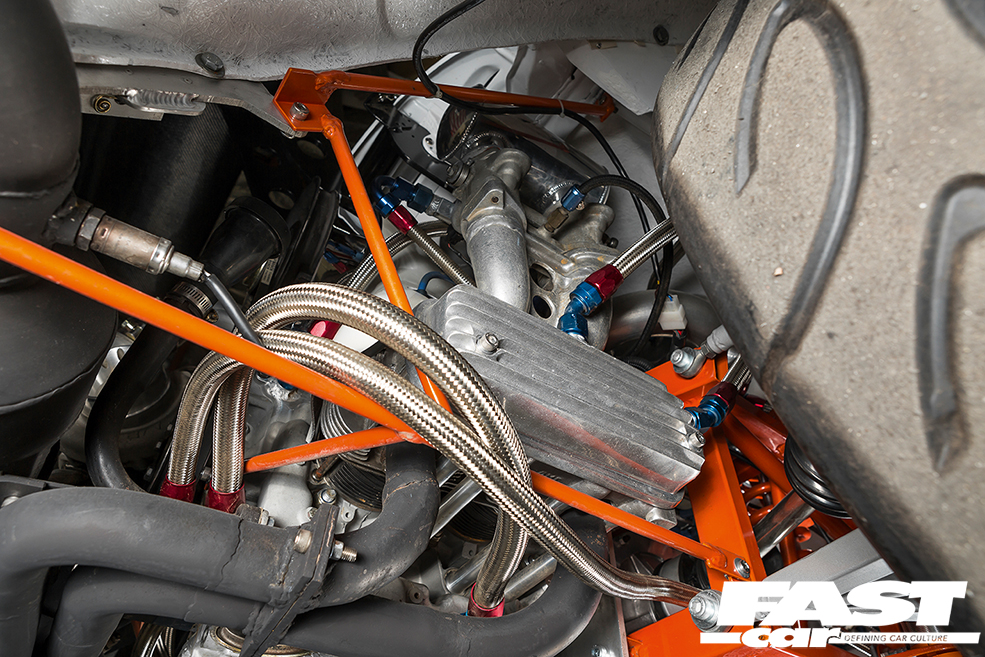
Richard had already put together a pretty formidable chassis before selling the car, as this can be seen if you open the front or rear hatch to reveal the mammoth spaceframe that simply couldn’t come off anything other than a fully-fledged racer. Wayne’s only added to the magic of this affair with a set of adjustable Koni coilovers that are dialled into circuit-slaying perfection. Once fully set up in an A-arm format, Phoenix began resembling more of a supercar than a humble Beetle.
With a tidy, simplistic interior coming together nicely to complement that unique (not to mention absolutely bonkers) central-seat setup, the final piece of the puzzle was for Wayne to get the outside of the car looking every bit as special as it deserved. He opted to use as much fibreglass as possible to reduce weight and make things easier to repair after the inevitable dings out on track. A complete Ice White Beetle body was soon sourced, topped off with the all-important bubble arches to house those huge rims, as well as that protruding front splitter and huge carbon fibre rear wing out. With those uncharacteristically subtle graphics, the overall aesthetic remains relatively understated considering what madness lies beneath.
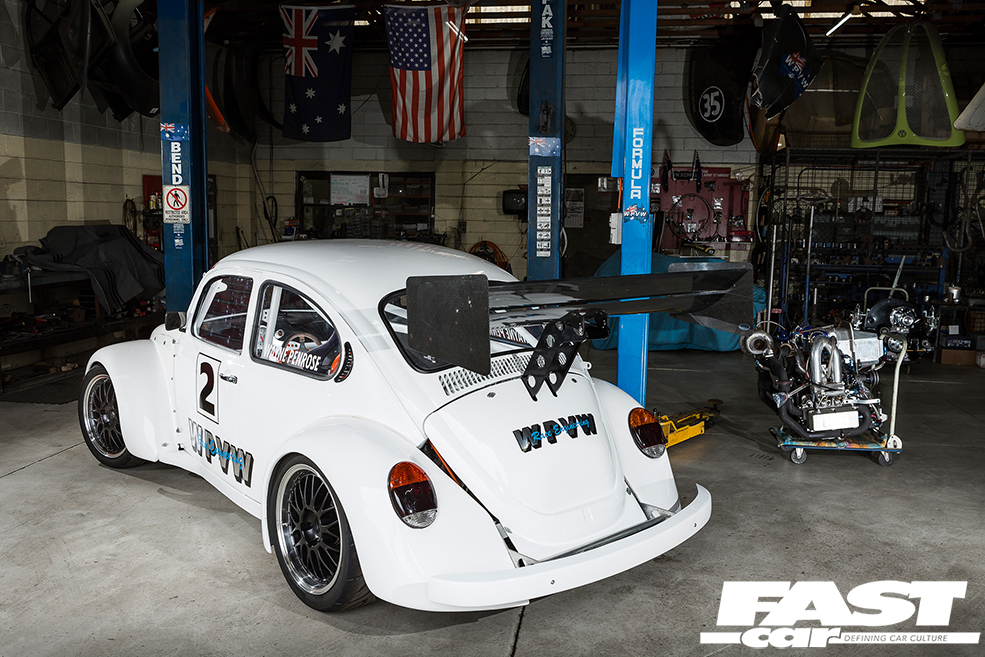
Now it’s finally complete in his eyes, Wayne’s wasted no time entering Phoenix into as many motorsport events as possible over the last few months, yielding a string of trophies that reflect all of the excruciating love, care and attention that have been ploughed into the build over the last quarter of a century. Results like gold medals in both the Huntley Hillclimb and the gruelling Snowy Mountains 1000 event illustrate just how versatile a racing machine it’s proven to be. It just goes to show, despite what everyone else may think around you, it’s never worth throwing in the towel every time you feel disheartened.
Tech Spec: VW Beetle Race Car
Engine:
1.8-litre VW flat-four air-cooled engine (from VW Type II Bus), stroked to 2827cc with 8.6:1 compression ratio, fully forged aluminium stroker block (comprising 82mm Scat crankshaft and Chevy journals, CP-Carrillo 104.75mm racing pistons with Perfect Seal gapless rings, Pauter X-beam modular chromoly con rods with Clevitte bearings and KS Germany main bearings), alloy ported VW Type IV heads (comprising WPVW-spec solid race 294-degree camshaft with .548-inch lift, straight-cut cam gearing, Thorsten Piper Tool steel Type I lifters, Bugpack chromoly pushrods, Racewear head stud and nut kit, Type IV 2.0-litre 1.25:1-ratio rockers, 50mm titanium intake valves, 41mm titanium exhaust valves, bronze guides with 8mm stems, VW Type I dual springs and chromoly retainers), twin Weber 48 IDA-style injection throttle bodies, Bosch ID2000 fuel injectors and turbo plenums, Carter Black lift pump to custom 3-litre surge tank, Aeromotive A1000 EFI fuel pump, Aeromotive 100-micron fuel filters, aluminium 11-litre fuel cell, Aeroflow 100-series stainless steel braided fuel lines, T-04E/60-1 turbocharger, 5-inch air intake pipe with meshing, WPVW mild steel 3-inch turbo-back exhaust system with 4-to-2 split-housing turbo manifold with 4-inch exit, Autocraft dry sump with external oil tank, 96-row front-mounted oil cooler, 009 distributor with Pertronix ignitor insert, Mallory Pro-Master coil pack, 8mm silicone suppressed leads, Microtech LT-8 fuel/ignition management system, VW Type I IRS single-plate 4-speed manual gearbox, changeable short- and long-track gear ratios, Kennedy Stage 4 3000lb pressure plate, Chromoly Type IV flywheel, 4-puck iron disc clutch, chromoly driveshafts, 930 Porsche 911 CV joints
Chassis:
8×18-inch (front) and 10×18-inch (rear) Porsche-replica BBS-style alloy wheels with black faces and polished lips, 245/40/18 (front) and 295/35/18 (rear) Yokohama Advan A050 semi-slick tyres, custom Formula 2 open-wheeled chassis and suspension setup, custom A-arm adjustable front and rear suspension, VW Type III front stub axle and steering arm assemblies, front and rear Koni 8211 coilovers with ratio rockers, custom modified steering shaft and rack, custom tie-rod assemblies, chromoly rear stub axle, 930 Porsche 911 CV flanges, Alfa Romeo/Brembo calipers with 280mm discs (front), VW Super Beetle front calipers with 280mm discs (rear), uprated brake master cylinder with remote reservoir, adjustable brake proportioning bias valve, stainless steel braided brake hoses
Exterior:
Full custom fabricated fibreglass body finished in Ice White with widened wings and splitters, aluminium mesh grille, Elite carbon fibre boot-mounted wing, lightened steel doors, Lexan polycarbonate windows, factory windscreen, carbon fibre rear bumper
Interior
Central-mounted fixed-back bucket seat in subframe-mounted roll cage, removable steering wheel, custom central dashboard
Thanks:
“Team WPVW: Jill Boothman, Chris Bolton, Ben Ford, Allan Penrose, John Hughes, Dean Penrose and Joe Tanti, Ray at Leisurecoat Powdercoaters, Daryl at DJH Panel ‘n’ Paint, Phil at Signtism, Kevin at Southcoast Rotary.”
Feature taken from Retro Cars Magazine. Words and photos: Ben Hosking

